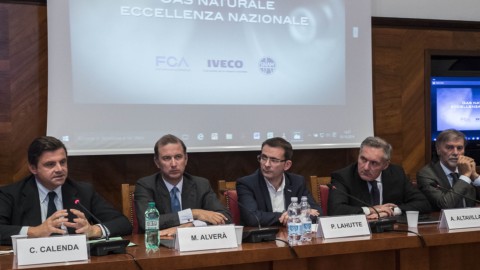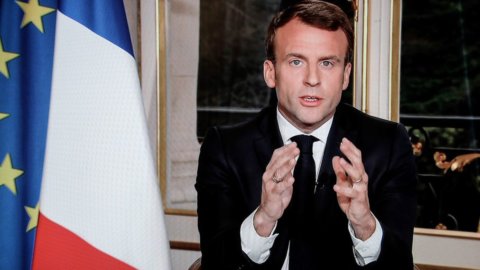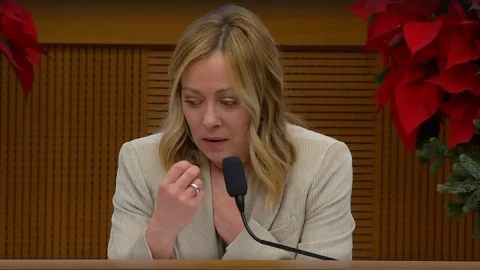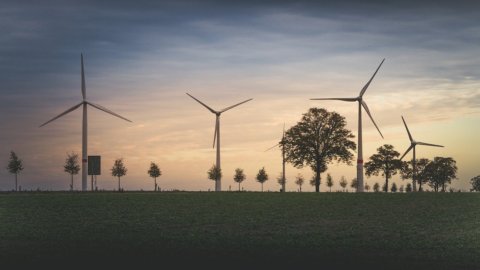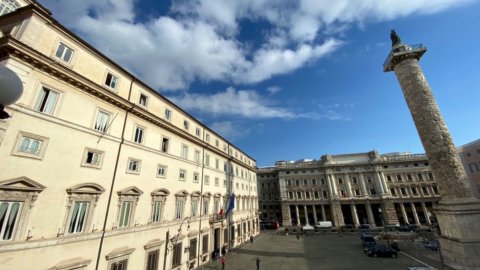FCA, Iveco e Snam newlyweds. A trio with the government's blessing, cemented by the strategic choice to focus straight on natural gas as a fuel capable of lightening the cities from the suffocating pall of CO2 and pollutants that forces the mayors (in Rome it will recover shortly and will last until March) to the unloved ritual of walking on Sundays to make the air barely breathable. The Dafi European directive goes in this direction, pushing for the sustainability of transport and Italy, which already boasts an annual turnover of 1,7 billion and about 20.000 employees in the methane sector for vehicles, can play an important role.
So becomes methane the true antagonist of diesel and petrol cars? Or will it be the electric car? The government proclaims its technological neutrality but, on a concrete level, for now it is decisively focusing on gas. This is demonstrated by the agreement signed on Wednesday afternoon by the COO of FCA Region Emea, Alfredo Altavilla, the president of Iveco Pierre Lahutte and the CEO of Snam Marco Alvera to the Ministry of Economic Development, in front of the ministers Carlo Calenda and Graziano Delrio.
What does the agreement provide?
The time frame in which the FCA-Iveco-Snam agreement operates is five/ten years. In this period, FCA and Iveco are committed to giving greater impetus to their ranges of gas vehicles. Looking at the numbers, it means aiming to replace 2 million diesel-powered vehicles (mainly) and petrol-powered ones with compressed gas-powered cars (CNG), which corresponds to around 6% of the fleet in circulation in 2014. Looking further, the goal is to reach at least 3 million CNG vehicles by 2026. To these numbers must be added the switch from diesel to methane of 13.000 trucks and lorries (4% of the circulating) and the transfer of 4.000 buses to methane fuel (4% of the market ).
To obtain these results, without which it would be difficult to achieve the European 2020 CO2 reduction targets in the transport sector, it is necessary to push the accelerator on the number of refueling stations available to motorists. And this is where Snam comes into play, making an investment of 200 million by 2021 to increase the number of the current 1.100 methane service stations. Looking even further, it is a question of doubling the number of distributors when the desired 3 million vehicles are in circulation.
Benefits
If these targets are met, it will be possible to achieve – based on the estimates presented by the three protagonists of the agreement – 40% reduction of CO2, over 90% reduction of nitrogen oxides (NOx) and the almost total reduction of particulate matter (PM), those fine particles that suffocate cities.
With positive effects, as well as on the environment, also on the economy both at a macro level and for families. "On a social level - underlined Marco Alverà of Snam which owns the Italian gas pipeline network - a family that switches to a methane-powered car saves €800 a year, which more or less corresponds to the average reduction in spending of a family due to the crisis. If we make a calculation on the 3 million methane-powered cars - he added - this is worth about 2 billion euros of annual savings for families. If we add the savings deriving from methane-powered trucks for industry and methane-powered buses for Municipalities, and if we also add up the investments that we will make as Snam and with the other operators in the supply chain, thanks to the multiplier effect, the impact on GDP will be significant".
Clearly, it is a question of making a new supply chain grow – in the case of the infrastructure of refueling points, both in the city and on the motorway – and the agreement with FCA and Iveco allows for an agreed development so that with the increase in demand for methane for motor vehicles which will also be joined by biomethane (Calenda has promised that the awaited decree that will fix the regulation should not be delayed) the supply of distributors will also grow adequately. “We will go hand in hand”, concluded Alverà.
Government strategies and electric mobility
Does the three-way agreement make methane gain pole position in the government's strategies on sustainable mobility? At the Paris Motor Show, which opened on 1 October and is still ongoing until the 16th, the news even recorded the "invasion of the electric car" with an explosion of new models from brands such as Volkswagen, Opel, Kia, Mercedes, Bmw and even Porsche as well as, of course, Tesla, Nissan, PSA. But there are also those who have highlighted the billionaire investments needed to support the production lines and the still high costs of electric vehicles.
“The government – clarified Development Minister Carlo Calenda who just Wednesday afternoon met with Russian Deputy Prime Minister Arkady Dvorkovich and Deputy Energy Minister Aleksey Teksler – increasingly wants to characterize Italy as a gas hub and diversify supplies . Europe predicts that in 2030 natural gas vehicles will reach 7 million units and this agreement certainly goes in that direction. This agreement is the expression of a modern industrial policy in which one lever of development is the facilitated taxation with reduced excise duties on methane fuel and the other lever is regulation, at no cost to the State, which allows the project to unfold in the best way. Electric mobility remains an important factor and Enel has launched initiatives in this field, but the government's perspective is that of technological neutrality in order to achieve the very ambitious objectives of Cop21 to which we are committed as a country".
FCA, which has not yet presented an electric car, was called into question by many questions during the press conference to present the methane agreement. Are there no electrical projects near the Lingotto? “There are more than one alternative fuels – was Alfredo Altavilla's answer – and there isn't a single solution that the manufacturer can afford to adopt. Epg (electronic guide, ed), hybrid, natural gas, electric engine: there are many viable technologies. The certain fact is that to achieve the European objectives for reducing CO2 from the current 120 grams/kilometre to the 95 grams expected by 2020, we need natural gas vehicles. We, like FCA, are very careful to propose technological solutions that consumers are able to buy. Or, if you prefer, the technologies must be such that the customer can afford them”.
Incentives
At the moment they are not on the agenda for either methane or electric cars. When asked about the possibility of ad hoc relief, Delrio replied "for the moment they are not envisaged, unless Minister Calenda insists". For his part, the development manager "advertised" the matter to Economy Minister Pier Carlo Padoan, stating: "We have to ask Padoan what he thinks."

